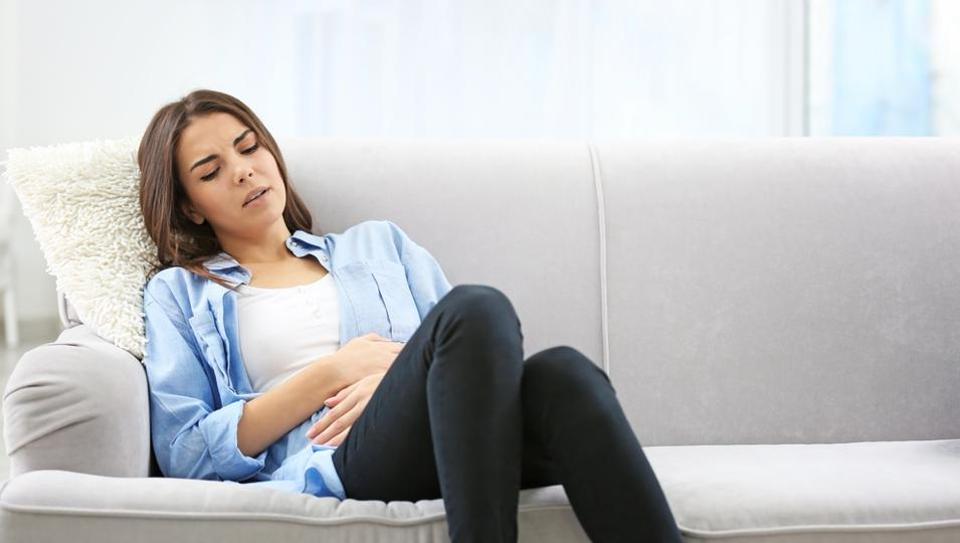Endometriosis: Is hysterectomy the only cure for pain in the pelvic organs for women?

In the March issue of Vogue, actor Lena Dunham (31) reveals how she underwent a hysterectomy to deal with the excruciating pain and complications of endometriosis. To treat the condition, Dunham had earlier undergone multiple surgeries.
Last year in April, just a month after being declared endometriosis-free, Dunham had to be rushed to the hospital for treatment after feeling the “greatest amount of physical pain that I have ever experienced”. She finally opted for a surgery to remove her cervix and uterus.

Fact file
Endometriosis is a chronic inflammatory disease of the pelvic organs of women, and is caused by abnormal growth. The tissue of the uterine lining is found outside the uterus, in organs such as ovaries, fallopian tubes, abdomen and the vagina, which results in bleeding and pain.
“The tissue may grow and bleed like the uterine lining does during the menstrual cycle. Surrounding tissue can become irritated, inflamed, and swollen. The breakdown and bleeding of this tissue each month can cause scar tissue, or adhesions, which can cause organs to stick together. The bleeding, inflammation, and scarring can cause pain, especially before and during menstruation,” explains Dr Aruna Kalra, gynaecologist and obstetrics surgeon, CK Birla Hospital, Gurugram.

The condition affects 1 in 10 women in their reproductive years, and more than 176 million women worldwide (Source: World Endometriosis Society). It can also impact chance of conception: about 25 to 50% women dealing with infertility have endometriosis, as per research by the American Society for Reproductive Medicine (ASRM). March is celebrated as Endometriosis Awareness Month, with the aim of promoting a better understanding of the condition.
Ways to treat it
While the exact cause of endometriosis is unknown, certain factors can increase the risk of endometriosis, such as a shorter menstrual cycle and a family history of the condition. “One theory says that endometriosis is a genetic disease, since some families show more patients with endometriosis compared to other families. Others suggest an immune response triggering inflammation,” says Dr Sudeshna Ray, Consultant Gynaecologist and Obstetrician at Jaslok Hospital and Research Centre, Mumbai.
While some women affected by the condition don’t have any symptoms, others suffer pelvic pain, painful intercourse, low fertility, heavy bleeding, swelling, bloating, pain and passing of blood while urinating. In severe cases, it can disrupt daily activities and sexual life.

Endometriosis can be diagnosed through sonography/laparoscopy and monitoring CA – 125 levels in the blood. As the condition is vague, experts may ignore its impact. Women may be unaware of their condition and consider it to be nothing more than severe period pain. “The worldwide delay in treatment for the disease is quoted to be about 7 years,” says Dr Ray.
Treatment includes prescribing painkillers such as nonsteroidal anti-inflammatory drugs (NSAIDs) as well as hormones like Progesterone, or Mifepristone to treat minor symptoms, for shorter durations of 3 to 6 months. In case of deep or Cystic Endometriosis, surgical treatment is recommended where laser surgery is done to remove deposits from the abdomen and endometriotic ovarian cysts.
There may be multiple surgeries if the problem keeps recurring. “About 40–80% of women have pain again within two years of surgery. The more severe the disease, the more likely it is to return. Taking birth control pills or other medications after having surgery may help extend the pain-free period,” says Dr Kalra.

Is hysterectomy a good idea?
But is hysterectomy recommended for dealing with Endometriosis? Dr Manjiri Mehta, Consultant Gynecologist, Obstetrician and Laparoscopic Surgeon, Hiranandani Hospital, Vashi, Mumbai, terms it a “radical approach”. “It causes a sudden menopause with its own side effects. The problems associated with such a surgery include mood changes, irritability, hot flushes and cold sweats, and importantly, loss of calcium from bones, as well as increased risk of Ischemic Heart Disease (IHD),” she says.
Dr Ray describes hysterectomy as a last resort, “usually offered to women who have completed their family and in whom all the other methods have failed”. Further, the surgery may not guarantee relief from the disease.
“There is a small chance that pain will come back even if your uterus and ovaries are removed. This may be due to endometriosis that was not visible or could not be removed at the time of surgery,” says Dr Kalra. She suggests that post a hysterectomy, women should be prescribed hormone replacement therapy to counteract the effects of sudden withdrawal of reproductive hormones.
Despite having her reproductive organs removed (though not the ovaries), Dunham is intent on having children, through adoption or surrogacy. Dr Mehta says it is a viable option for women who undergo a hysterectomy: “If the ovaries and tubes are also removed along with the uterus, then donor eggs can be used with help from a surrogate mother to have biological children.”
[“source=food.ndtv”]




